Selecting the perfect cut of center-cut pork tenderloin, weighing 1-1.5 pounds, is crucial for a successful BBQ pork tenderloin dish. Seasoning with salt, pepper, garlic powder, paprika, thyme, or oregano enhances its natural flavors. You can choose between marinades for immediate flavor infusion or dry rubs for gradual taste development. Grilling techniques include preheating to medium-high heat, using indirect heat methods, and aiming for an internal temperature of 145°F (63°C) for medium doneness. Resting the meat post-grilling ensures moisture retention. Slicing against the grain after resting promotes juiciness. Serve with salads, baked beans, char-grilled veggies, mashed potatoes, corn on the cob, and dessert for a complete BBQ pork tenderloin experience.
Discover the secrets to crafting a mouthwatering BBQ experience with minimal ingredients! This guide unveils the art of preparing juicy, flavorful pork tenderloin. From selecting the perfect cut to mastering grilling techniques, we demystify the process. Learn about seasoning blends and the age-old debate between marinades and dry rubs. Get ready to impress your taste buds with a simple yet delicious BBQ pork tenderloin recipe that highlights the meat’s natural flavors.
- Choosing the Right Pork Tenderloin Cut
- Seasoning Basics for a Flavorful BBQ
- Marinade or Dry Rub? The Debate Unfolded
- Grilling Techniques for Perfect Texture
- Cooking Times and Temperature Considerations
- Resting and Slicing Tips for Maximum Juiciness
- Accompaniments to Complete Your Meal
Choosing the Right Pork Tenderloin Cut
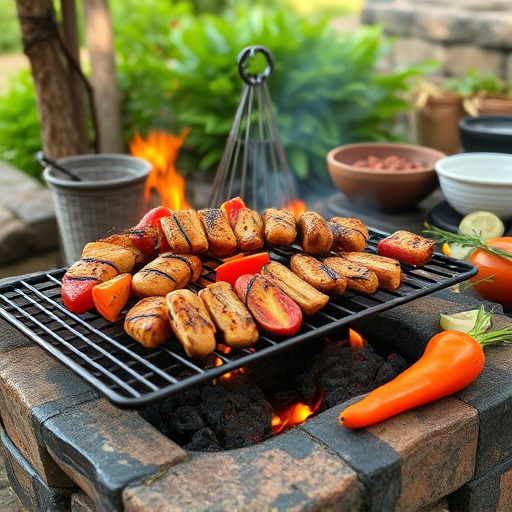
When it comes to a mouthwatering BBQ pork tenderloin recipe, selecting the perfect cut is half the battle won. Look for a center-cut pork tenderloin with minimal fat and a nice even marbling. This ensures even cooking and prevents the meat from becoming tough or dry during the barbecue process. The ideal tenderloin should weigh around 1-1.5 pounds (450-680 grams) to ensure it cooks thoroughly without overcooking the exterior.
Choosing the right cut allows you to focus on the minimal ingredients needed for this delicious dish. With its delicate flavor and tender texture, pork tenderloin is a versatile choice for BBQ lovers, allowing your chosen seasonings and sauces to shine.
Seasoning Basics for a Flavorful BBQ
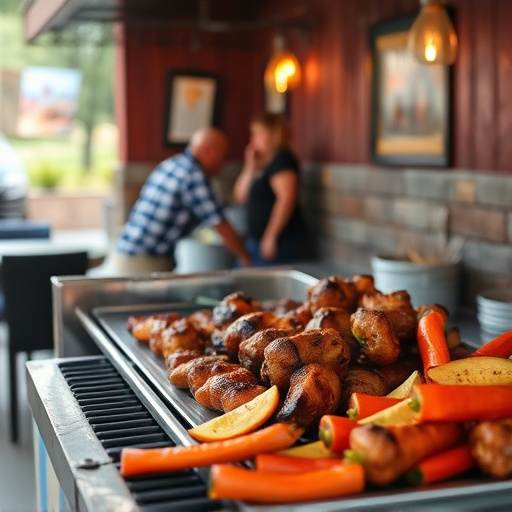
When it comes to seasoning a delicious BBQ pork tenderloin recipe, simplicity is key. A well-balanced blend of basic spices can transform this humble cut of meat into a mouthwatering barbecue sensation. Start with a generous coating of salt and pepper; these classic seasonings enhance the natural flavors of the pork. For an extra kick, add a touch of garlic powder and paprika. The former brings a subtle onion-like flavor, while the latter contributes a rich, smoky taste that’s characteristic of BBQ. A pinch of dried herbs like thyme or oregano can also lend depth to your dish, creating a complex and aromatic profile that will have your guests licking their plates clean.
Don’t overcomplicate things with fancy ingredients; let these few essential seasonings do the talking. This simple yet effective combination will allow the tenderloin’s natural juices and tenderness to shine through, ensuring every bite is packed with flavor. So, for a classic and delicious BBQ pork tenderloin recipe, keep it basic and let your hard work in seasoning speak volumes.
Marinade or Dry Rub? The Debate Unfolded
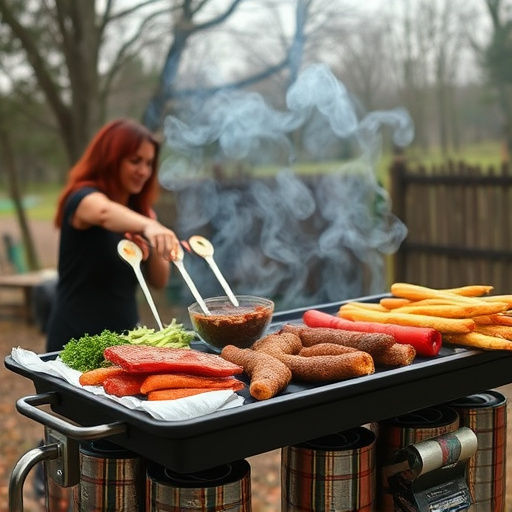
When it comes to preparing mouthwatering BBQ pork tenderloin recipes, there’s an age-old debate: marinade versus dry rub. Both methods have their fervent advocates, each claiming superiority for their chosen technique. But what’s the truth?
The allure of a marinade lies in its ability to tenderize the meat and infuse it with deep, tangy flavors from the get-go. Acidic ingredients like lemon juice or vinegar, combined with aromatic herbs and spices, create a potent mixture that breaks down the pork’s muscle fibers, resulting in incredibly soft and juicy slices. On the other hand, dry rubs are beloved for their simplicity and versatility. Coating the tenderloin in a blend of spices allows flavors to develop gradually as the meat cooks, creating a complex, smoky profile that coats each bite. Dry rubs also offer the added bonus of easy preparation, requiring only a few minutes to whip up, making them ideal for last-minute BBQ get-togethers.
Grilling Techniques for Perfect Texture
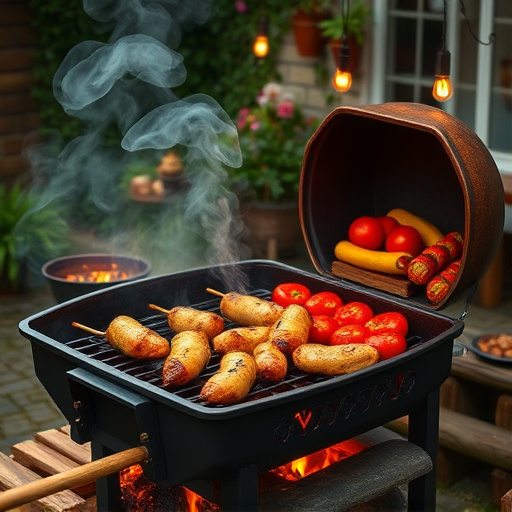
For a BBQ pork tenderloin recipe that delivers exceptional texture, mastering grilling techniques is key. Start by preheating your grill to a medium-high heat, allowing it to reach a consistent temperature. This ensures even cooking and helps sear in those delicious flavors. When grilling pork tenderloin, it’s best to avoid direct high heat, as this can lead to a dry end product. Instead, opt for indirect heat, placing the meat on one side of the grill while using the other side for indirect heat sources like a chimney starter or wood chips. This method allows for slow, steady cooking, resulting in tender, juicy slices every time.
Turn your pork tenderloin occasionally to promote even browning and prevent char marks from overtaking the surface. Aim for an internal temperature of 145°F (63°C) for medium doneness; this ensures a perfectly cooked interior while leaving some juiciness intact. Resting the meat for about 10 minutes after grilling allows those delicious juices to redistribute, enhancing the overall flavor and keeping your BBQ pork tenderloin recipe moist and tender.
Cooking Times and Temperature Considerations
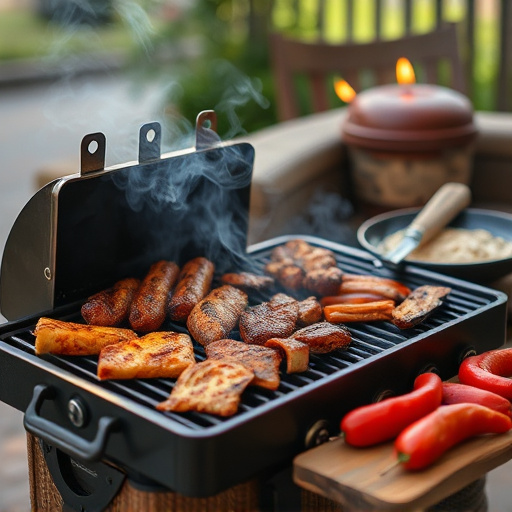
When preparing a BBQ pork tenderloin recipe, understanding cooking times and temperature is crucial for achieving the perfect dish. Typically, pork tenderloin takes around 25-30 minutes to cook at a consistent internal temperature of 145°F (63°C). This ensures that the meat remains juicy and tender, with a slight crispy edge from the grill marks. It’s important to use a meat thermometer to check the internal temperature, as this guarantees doneness without overcooking.
Preheating your grill to high heat, around 400-450°F (200-230°C), before placing the pork tenderloin on the grates is key. This initial high heat sears the exterior, locking in flavors and juices. Once the meat reaches its target temperature, reduce the heat to medium-low for any remaining cooking time, allowing for gentle, even heating throughout.
Resting and Slicing Tips for Maximum Juiciness
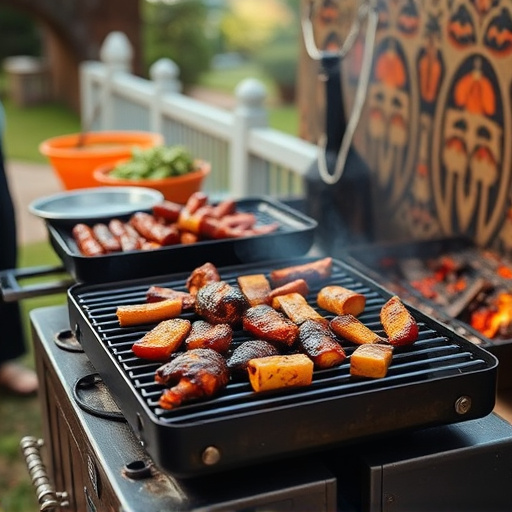
After cooking your BBQ pork tenderloin, allowing it to rest for 10-15 minutes before slicing is crucial. This resting period lets the juices redistribute throughout the meat, ensuring each slice remains juicy and flavorful. Slicing against the grain will also help maintain tenderness and prevent tough bands from forming.
For maximum juiciness, consider cutting the pork tenderloin into thin slices using a sharp knife. Start at one end and cut parallel to the cutting board, maintaining a consistent thickness throughout. This technique allows for even cooking and makes each bite incredibly tender and packed with delicious barbecue sauce.
Accompaniments to Complete Your Meal

Complete your BBQ pork tenderloin recipe with a variety of delicious accompaniments to enhance the flavor and create a well-rounded meal. Fresh, crisp salads make a great side dish, offering a contrast to the rich, smoky meat. Consider a simple green salad with a light vinaigrette or a coleslaw for added crunch. Baked beans are another classic BBQ companion, providing a hearty and sweet taste that complements the pork tenderloin perfectly. For an extra special touch, add some char-grilled vegetables like asparagus or zucchini to the table, offering both color and nutrition.
Don’t forget about starchy sides – mashed potatoes, corn on the cob, or even a simple baked potato are excellent choices. They provide comfort and balance out the meal. And for dessert, try a refreshing fruit salad or homemade apple pie to cap off your BBQ pork tenderloin feast. These accompaniments not only make your meal more enjoyable but also ensure that there’s something for everyone, making it a true crowd-pleaser.
